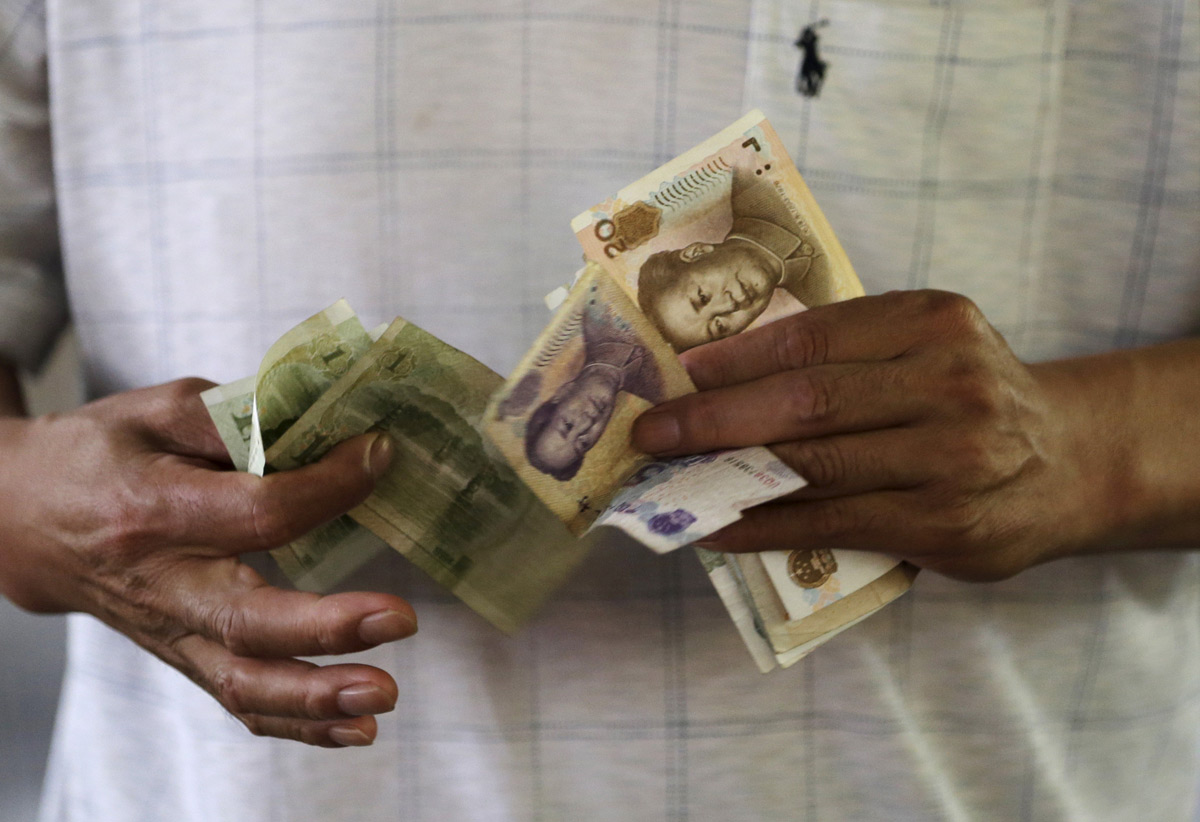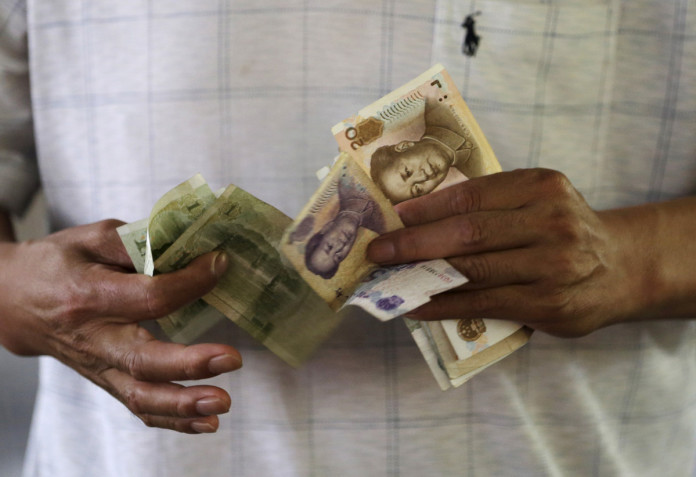SHANGHAI – China’s yuan firmed against the dollar on Friday after the central bank fixed a much stronger midpoint, but the currency is on course to be the worst performing major Asian currency this year and have its biggest annual loss since 1994.
The yuan, which has reached an 8-1/2 year low, was on track to lose nearly 7 per cent against the dollar in 2016.
The People’s Bank of China set Friday’s midpoint rate at 6.9370 per dollar prior to the market opening, much firmer than the previous fix of 6.9497.
The stronger guidance rate came after a fall in the dollar on global markets as traders used the quiet holiday period to profit from the greenback’s recent gains, while a drop in US Treasury yields on waning risk appetites reduced its appeal.
A gauge of dollar strength against six other currencies fell to its weakest level in more than two weeks. The figure stood at 102.4 after touching a low of 101.99. The previous close was 102.68.
A trader at a Chinese bank in Shanghai said that in the wake of Britain’s vote to leave the European Union and Donald Trump’s US presidential election victory, the yuan “is likely to weaken further next year”.
On Friday, the spot yuan market opened at 6.9310 per dollar and was changing hands at 6.9495 at midday, 57 pips firmer than the previous late session close and 0.18 per cent softer than the midpoint.
Another trader at a foreign bank in Shanghai said trade was calm on the last business day of the year, but he saw more uncertainty ahead.
“The yuan may be more volatile next year after changes to the CFETS index basket,” he said.
While moves would still mostly depend on changes in the US dollar, “newly-added currencies like the South Korean won will create some noise,” the trader predicted.
Late on Thursday, China announced a change in the way in how a key yuan index will be calculated in the new year, nearly doubling the number of foreign currencies in the basket that’s used to set the yuan’s value.
The US dollar’s weight will be reduced to 22.4 per cent from 26.4 per cent and the euro’s to 16.34 per cent from 21.39 per cent, the China Foreign Exchange Trade System (CFETS) said.
Traders noted that authorities adopted a different approach towards the yuan at the end of this year.
“The central bank was more inclined to release depreciation pressure on the yuan this time last year, when they loosened their grip on the spot rate and let the currency weaken to elevate the dollar purchase cost for those who want to swap yuan for dollars at the beginning of the next year,” said one trader at a Chinese bank.
“But this time, authorities want to stabilise the currency as they are afraid of triggering stronger expectations of depreciation,” he said.
China’s authorities have rolled out policies over the past two months to tighten its grip on capital outflows after a slide in the yuan, which was down to hit 8-1/2 year lows.
The offshore yuan was trading 0.28 per cent weaker than the onshore spot at 6.9691 per dollar.
Offshore one-year non-deliverable forwards contracts (NDFs), considered the best available proxy for forward-looking market expectations of the yuan’s value, traded at 7.302, 5.00 per cent weaker than the midpoint.
One-year NDFs are settled against the midpoint, not the spot rate.






